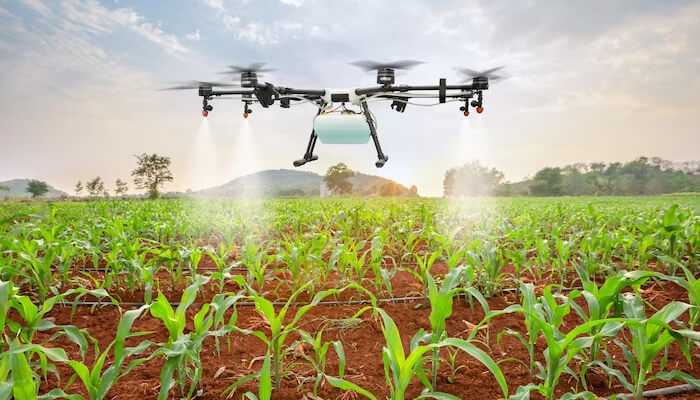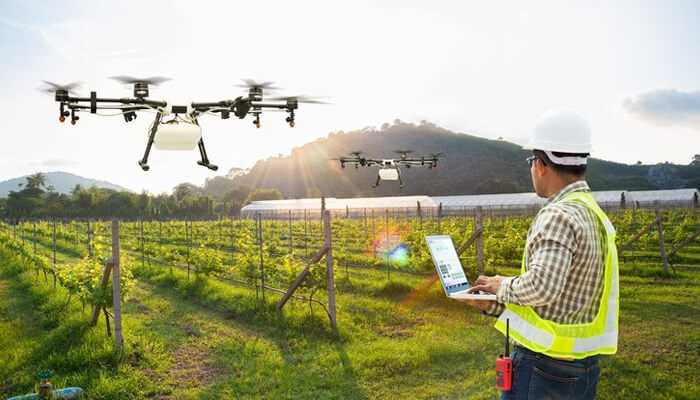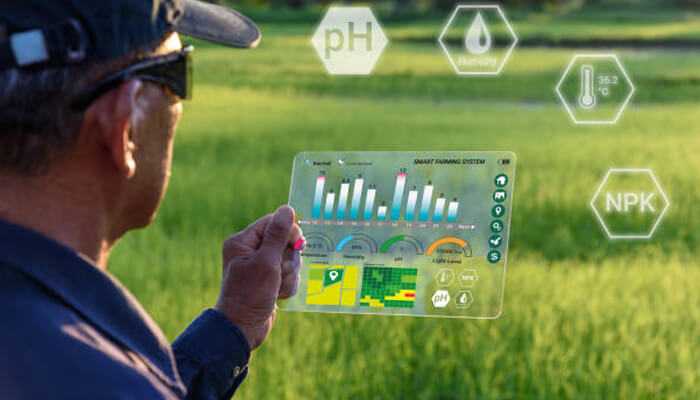You will have a very tough time looking at any economic sector without seeing drone use. Drones are employed in the agricultural industry for a wide range of duties, such as spraying fertilizer, mapping, land inspection, crop monitoring, aerial surveillance, looking for rotting or damaged crops, and many others. Here are some key ways in which agricultural drones are evolving in the day-to-day market:
Different drone kinds are being investigated to determine which has the most potential for farming, agriculture, and gardening. Quadcopters and other multirotor drones are the finest options for fertilizing crops. Fixed-wing drones are perfect for fertilizing crops, but they are difficult to use because of their large structure and need for a large landing area.
Drone manufacturers are also embracing the error of artificial intelligence. They are incorporating artificial intelligence into these tools to make them more effective in agriculture.
Improved hardware
Agricultural drones are becoming more advanced in terms of their hardware components. This included better and more reliable drone platforms, longer battery life, increased payload capacity, and enhanced stability for flying in various weather conditions.
Data analytics and software
Drone companies and software developers are focusing on creating user-friendly software platforms for data processing and analysis. Information from data analytics allows farmers to make informed decisions based on the data collected by drones, such as identifying areas with crop stress, disease, or nutrient deficiencies.
Integration with farm management software
Integration of drone data with existing farm management software and systems is becoming more seamless. This allows farmers to streamline their operations and have a comprehensive view of their entire farm.
Autonomous flight and navigation
Many agricultural drones are equipped with autonomous flight capabilities, reducing the need for manual piloting. This makes it easier for farmers to conduct regular aerial surveys of their fields and gather data without extensive drone piloting skills.
Regulatory compliance
Regulations regarding drone usage in agriculture are evolving and governments are working on regulations specific to the use of drones in agriculture. These regulations are aimed at ensuring safe and responsible drone operations in agricultural settings while allowing for innovation and growth in the sector.
Customization and adaptation
Some companies are offering customizable drone solutions to meet the specific needs of different types of crops and farm sizes. These solutions include different payloads, flight patterns, and software solutions tailored to particular agricultural challenges. This allows farmers to tailor their drone systems to their unique requirements.
Cost reduction
As the technology matures and competition increases, the cost of agricultural drones and associated equipment is gradually decreasing, making them more accessible to a wider range of farmers.
Training and Education
Training programs and resources for farmers to learn how to operate drones effectively and interpret the data are becoming more widely available.
Environmental benefits
The use of agricultural drones is also contributing to more sustainable farming practices by reducing the need for excessive chemical inputs, optimizing irrigation, and minimizing the environmental impact of agriculture.
Uses of agricultural drones
Here are some common uses of agricultural drones:
Crop monitoring
Drones are used for regular crop monitoring. They can capture high-resolution images of fields, allowing farmers to track plant growth, identify stressed areas, and make timely interventions. This is especially valuable for large-scale farms.
Pest and disease detection
Drones equipped with specialized cameras and software can detect pests and diseases early on. This early detection helps in targeted pest control, reducing the need for broad-spectrum pesticides.
Irrigation management
Drones can assess soil moisture levels and identify areas that require irrigation. They help in optimizing irrigation systems, conserving water, and preventing over-irrigation.
Livestock management
Some drones are designed for livestock management. They can be used to monitor the health and movement of animals, count livestock, and check fence integrity.
Crop spraying
Drones equipped with sprayers can be used for precise and efficient pesticide and fertilizer application. This reduces chemical wastage and minimizes the exposure of farmworkers to chemicals.
Data integration
The data collected by agricultural drones can be integrated with other farm management software and systems, providing a comprehensive view of farm operations. This integration helps in decision-making and farm optimization.




